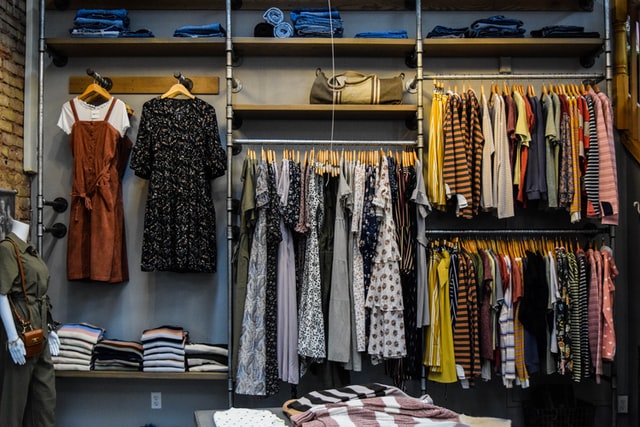It’s a big difference between dreaming about opening a business and really doing it. It’s easy to fantasize about a future where people rush to your company and you become a cultural icon overnight, but getting there requires a lot of backroom effort.
10 Ways To Setup Your E-commerce Apparels Business
Here are our 10 ways to set up your E-commerce Apparels Business.
1. Choose Your Niche
Keep the following four factors in mind as you examine your options:
- To stay ahead of competitors, be as distinctive as possible.
- Go with what you know the best about.
- Do basic research about the niche and its demand
- Check to see if the specialty has profit potential.
The key is to be very precise and dig down into your niche, as this will make it easier for you to discover and advertise to your potential customers.
2. Analyze Your Target Audience
Because your items will be needed or desired by a certain group or groups of individuals, defining a need and determining a target audience go hand in hand. These are the folks you’ll be attempting to interact and connect with on a daily basis. The better you understand those folks, the more likely you are to gain and maintain their business.
3. Form A Business Plan
You’ve determined your niche, goods, and business strategy; now it’s time to focus on the details of how your company will run, such as:
- The market
- Services and products
- The most powerful rivals
- Online fulfillment techniques and business models
- Brand association company description
You’re far more likely to get colleagues on board if your strategy is smart, strategic, precise, and appealing.

4. Choose Your Product
This is an important step because, to begin with, the quality of your final designs is determined by the product and its features. Second, you want to choose items that will make you money. You also want to keep up with vogue but stay in the limelight so it’s a must that you come up with something not so cliche.
Start Simple
To start grand and have an ecstatic beginning is tempting. However, we would advise beginning small and gradually. Begin with a signature product. Something that you would be remembered for as your roots and then build your stores.
Keep an Eye on the Fabric
The clothes will be determined by the fabric used.
Consider the Future
The fashion game is always changing. T-shirts, hoodies, and waterproof coats are examples of items that are constantly in demand. Alternatively, you may prepare for shifting fashion trends by opening a store with a broad selection of merchandise.

5. Choose Your Business Model
There are four different sorts of business models to choose from:
Print-on-Demand
Stores where you can print your logo and image on blank clothing and have everything done automatically.
Cut-and-Sew
This sort of online clothing store business strategy is ideal for individuals who wish to start from the ground up and create a comprehensive clothing line. You do everything yourself here, from creating your clothing to producing and delivering them.
Clothing with a Private Brand
Essentially, you’ll be purchasing wholesale apparel and accessory items to sell and promote under your own fashion label. Carefully select your manufacturer. For instance, if you are looking to sell waterproof jackets, lookout for a trusted waterproof coat manufacturer to get your products from. If you want to maintain and clean jackets, you could refer to guyabouthome.
Clothing Wholesaling
They provide you the ability to sell apparel that has been fulfilled by wholesalers.
7. Find A Suitable E-Commerce Platform
A solid e-commerce platform allows you to list goods quickly and simply, upload images, provide product descriptions, and build a quick and simple checkout procedure. Pinterest, Instagram, Facebook are a few examples.

8. Set Up Your Shop
Your domain should be compatible with your company name, as well as your long-term business objectives and goods.
- Keep your company name brief, straightforward, and easy to say.
- Exclude terms like “a” or “the.”
- Avoid business names that are overused or generic.
- Avoid names that are difficult to spell.
- Pick a name that can grow with you.
- Make a logo.
- Select a common Payment Processor
- Make shipping and return policy.
9. Decide A Price
You’ll need a thorough grasp of how much it costs you to create the products to set suitable pricing.
You should also think about the costs of running your clothing lines, such as how much you spend on rent for your storage, shipping charges, and staff salaries. Once you know the cost price, you can set a selling price while still generating a profit.
10. Bring In Traffic
The greatest method to get them to you in an online marketplace is to utilize excellent marketing.

Establish a Web Presence
Make SEO a top priority. Use an appealing web design.
Marketing on Social Media
Facebook’s targeting tools are fantastic, and they can help you contact the appropriate individuals. If you don’t have a lot of money to spend on ads, start with influencer marketing: give away free stuff in return for shoutouts from social media users who have a lot of followers in your target demographic.
Giveaways
You may also hold competitions and giveaways.
Email Marketing
Create your email list before your business launches, and then use email campaigns to strengthen your interactions with them thereafter.
Conclusion
Starting an internet store may be a simple formula for success, thanks to increasing trends and a variety of business structures that allow for flexibility while being inexpensive. Follow these rules and make it happen!


































